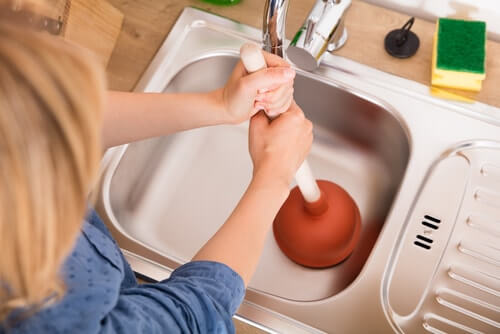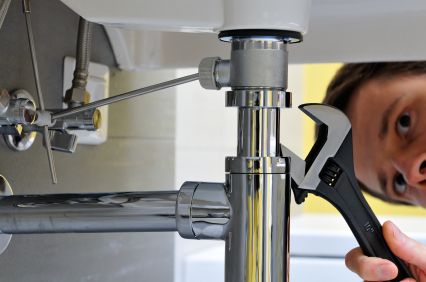In this article in the next paragraphs you can discover a good deal of worthwhile material related to Expert Tips for Emergency Plumbing Repairs.

Plumbing emergency situations can strike at any time, triggering stress and possible damage to your home. Whether it's a ruptured pipeline, a clogged up drain, or a dripping faucet, understanding exactly how to take care of the situation until an expert plumbing professional arrives can save you from more complications. This short article supplies crucial emergency situation pipes tips to help you mitigate damages and regain control during a plumbing dilemma.
Shut off the Water System
The very first step in any kind of pipes emergency situation is to shut down the water. For localized concerns, such as a dripping faucet or bathroom, shut off the shutoff near the component. In the case of a significant leakage or ruptured pipeline, find your home's major water shut-off shutoff and turn it off promptly. Recognizing the location of these shutoffs ahead of time can conserve beneficial time during an emergency.
Shut Off Your Hot Water Heater
In certain emergency situations, such as a burst pipeline, it's smart to shut off your hot water heater. This avoids getting too hot or damage to the system when water stops streaming. Turn off the power supply to the hot water heater (electric or gas) and let it cool to stay clear of prospective hazards.
Momentarily Stop a Ruptured Pipe
A ruptured pipe can bring about substantial water damages in minutes. To alleviate the issue:
- Clamp or Wrap the Pipeline: Make use of a pipe clamp, rubber, or duct tape as a short-lived seal.
- Divert Water Flow: When possible, divert the water into a container or basin to restrict damage to surrounding locations.
- Keep the Location Dry: Use towels or a wet/dry vacuum cleaner to remove standing water.
- Call a specialist plumbing immediately to attend to the problem permanently.
Have an Emergency Situation Plumbing Set
Prepare a standard pipes emergency kit to deal with small issues successfully. Your kit must consist of: - Adjustable wrench
- Plumbing's tape
- Pipeline clamps
- Towels and cloths
- A bettor
- Epoxy putty
- Bucket.
- Having these tools handy can make a substantial difference in your capability to take care of emergency situations.
Unclog Drains Safely.
A stopped up drain can be an irritating and messy issue. Below's exactly how to tackle it:. - Make use of a Plunger: For sinks or bathrooms, a bettor can frequently displace small clogs. Ensure you make use of the proper sort of plunger for the fixture.
- Warm Water and Dish Soap: For grease-related obstructions, pour a combination of warm water and dish soap away to separate the grease.
- Avoid Chemical Drain Cleaning company: While appealing, chemical cleaners can cause even more damage than great, especially to older pipelines.
- If these approaches don't function, prevent making use of excessive pressure, as it may get worse the obstruction.
Manage Overflowing Toilets.
An overruning bathroom can trigger immediate disorder. Here's what you must do:. - Stop the Water Flow: Remove the container cover and push down on the flapper valve to quit water from going into the bowl. Turn off the water supply to the commode if needed.
- Plunge Carefully: Utilize a toilet bettor to remove the blockage, yet prevent aggressive plunging, which can cause spilling or additional damage.
- Contain the Spill: Usage towels or a mop to clean up water promptly to avoid flooring damages.
Address Tiny Leaks with Temporary Repairs.
Tiny leakages can rapidly become substantial issues if left unchecked. Make use of these momentary fixes up until expert aid shows up:.
- Pipe Tape or Epoxy Putty: Use water resistant tape or epoxy putty to temporarily seal the leakage.
- Rubber and Clamp Technique: Wrap an item of rubber or an old inner tube around the leakage and secure it with a tube clamp or duct tape.
- Pails or Towels: Location buckets under the leakage to contain water and stop damage to flooring or furnishings.
- While these fixes aren't irreversible, they can help reduce water loss and damages.
Handle Frozen Pipeline Meticulously.
In colder environments, icy pipelines are an usual emergency. If you presume an icy pipe:. - Shut off the Water: Turn off the major water supply to prevent a burst pipeline.
- Defrost Gradually: Make use of a hairdryer, heating pad, or warm towels to thaw the pipe gradually. Avoid open flames or extreme warm, as these can damage the pipe.
- Check for Leakages: Once the pipe is thawed, check for splits or leakages prior to turning the water back on.
Know When to Call a Professional.
While quick fixes can help temporarily, particular pipes problems need prompt expert attention. Call a plumbing professional if:.
- A ruptured pipe creates extensive flooding.
- Drains pipes or toilets remain clogged up despite your initiatives.
- You observe persistent leakages or water pressure concerns.
- Your water heater is dripping or malfunctioning.
- Quickly speaking to an expert ensures the problem is dealt with properly and prevents more issues.
Prevent Additional Damages.
Taking quick activity to reduce damages can save you money and time in the long run. Here's just how:. - Move Valuables: Get rid of furniture, electronic devices, and various other products from the damaged area.
- Use Sandbags: For flooding circumstances, place sandbags around the location to redirect water.
- Turn off Electrical power: If water has actually reached electric outlets or devices, turn off the electrical power to stop shocks or fires.
Conclusion.
Pipes emergency situations can be overwhelming, however with the appropriate knowledge and tools, you can handle the scenario efficiently up until aid arrives. By shutting off the water, addressing little leakages, and making use of temporary repairs, you can lessen damages and keep your home safe. Keep in mind, these ideas are short-lived solutions; always consult a certified plumbing to deal with the source of the issue. Preparation and quick thinking are your finest allies in any pipes emergency situation.
Top Tips for Emergency Plumbing Leak Repairs
Identifying the Leak Source
To properly address a plumbing leak, begin by locating the source using a flashlight and inspecting visible pipes for any signs of water accumulation or dripping. Look for water stains, mold growth, or musty odors which can indicate hidden leaks. Follow the water trail to pinpoint the origin of the leak. Check under sinks, around appliances, and near water heaters as these are common areas for leaks to occur.
If the leak is coming from a visible pipe joint, tightening the connection may solve the issue. Use a wrench to secure the joint without over-tightening, which could cause damage. For small cracks or holes, a temporary fix can be applied using epoxy putty or a pipe clamp until a permanent solution is implemented.
Remember to turn off the water supply before attempting any repairs to prevent further damage. Once the leak is identified, take necessary steps to either fix it yourself or contact a professional plumber for assistance.
Shutting Off the Water Supply
Before initiating any plumbing repairs, make sure you shut off the water supply to prevent further leakage. Locate the main shut-off valve for your property. This valve is typically found near the water meter or where the main water line enters your home. Turn the valve clockwise to shut off the water flow. If you’re dealing with a localized leak, like a sink or toilet, you can also shut off the water supply to that specific fixture by using the individual shut-off valves located underneath or behind the fixture.
Shutting off the water supply is essential to prevent more water from entering the system and causing additional damage. By taking this initial step, you can minimize the extent of the leak and prevent potential flooding in your home. Remember to inform everyone in the household about the water shut-off location in case of future emergencies. Once the water is off, you can proceed with identifying and addressing the leak source to resolve the issue effectively.
Temporary Leak Containment
If you’ve successfully shut off the water supply, the next step is to contain the leak temporarily to prevent further damage. Start by locating the source of the leak. Check for any visible cracks, holes, or burst pipes. Once identified, use materials like duct tape, pipe clamps, or rubber patches to cover the damaged area. For smaller leaks, a bucket or container can be placed underneath to catch dripping water.
If the leak is coming from a pipe joint, tightening the connection with a wrench might help reduce the leakage temporarily. Remember, these are just temporary solutions to prevent immediate damage. It’s essential to contact a professional plumber to assess and fix the issue permanently.
While containing the leak, keep an eye on the affected area for any signs of worsening. If the leak worsens or you’re unable to contain it effectively, don’t hesitate to contact emergency plumbing services for immediate assistance. Taking quick action to contain the leak can help minimize water damage and save you from costly repairs in the long run.
Contacting Emergency Plumbing Services
When facing a plumbing emergency, promptly reach out to professional plumbing services for immediate assistance. Contacting emergency plumbing services is essential to prevent further damage to your property. These professionals have the expertise and tools to address the issue quickly and effectively. When you call for emergency plumbing services, provide as much detail as possible about the leak, its location, and any steps you have taken to contain it. This information will help the plumbers assess the situation and come prepared to tackle the problem.
Ensure that you have the contact information for emergency plumbing services readily available, so you can act swiftly in case of a leak. Many plumbing companies offer 24/7 emergency services, so don’t hesitate to reach out, even if the leak occurs outside regular business hours. By contacting professional plumbers promptly, you can mitigate the damage caused by the leak and restore the functionality of your plumbing system efficiently.
Post-Repair Leak Prevention
To prevent future leaks after repairs, conduct a thorough inspection of all plumbing connections. Start by checking for any signs of corrosion, rust, or wear on pipes, fittings, and fixtures. Tighten any loose connections and replace any damaged parts to guarantee a secure fit. Additionally, inspect the seals around toilets, sinks, and tubs to make sure they’re intact and not deteriorating.
Consider installing water leak detectors in key areas of your home, such as near water heaters, under sinks, and around appliances like washing machines and dishwashers. These detectors can alert you to leaks early on, helping you address them before they cause significant damage.
Regularly monitor your water bill for any unexpected spikes, as this could indicate a hidden leak. If you notice a sudden increase in water usage without a corresponding change in your habits, it’s crucial to investigate the issue promptly.
https://callprofessorplumb.com/articles/top-tips-for-emergency-plumbing-leak-repairs/

Do you enjoy more info about Expert Tips for Emergency Plumbing Repairs? Place feedback below. We would be delighted to find out your ideas about this piece. In hopes that you visit us again soon. Enjoyed our review? Please share it. Let other people discover it. We appreciate your readership.
Book Your Service
Comments on “Quick Solutions for Plumbing Emergencies: Essential Steps to Take Until Help Arrives”